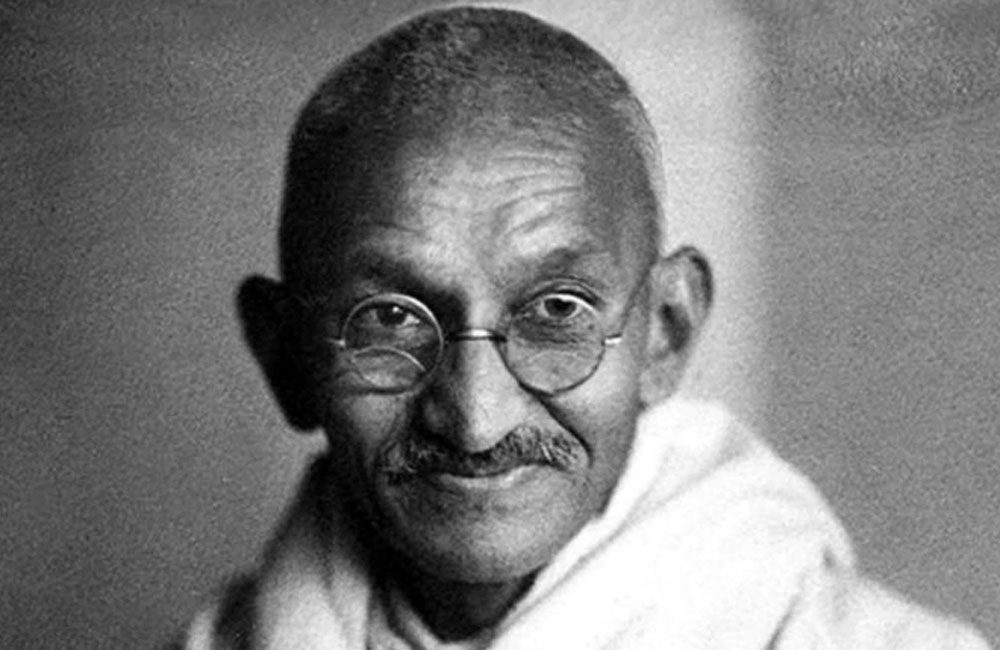
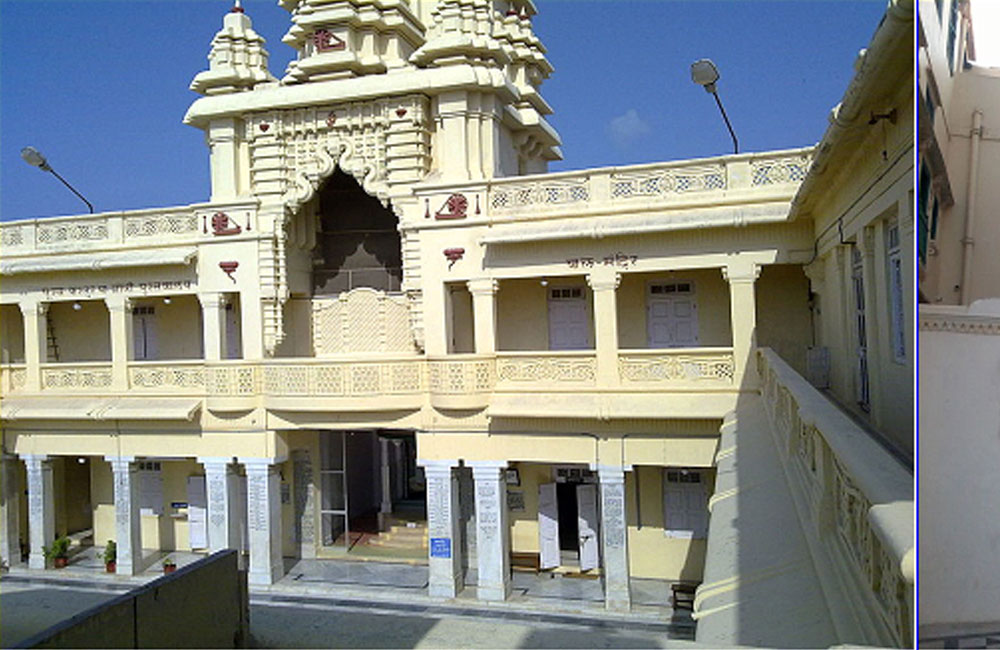
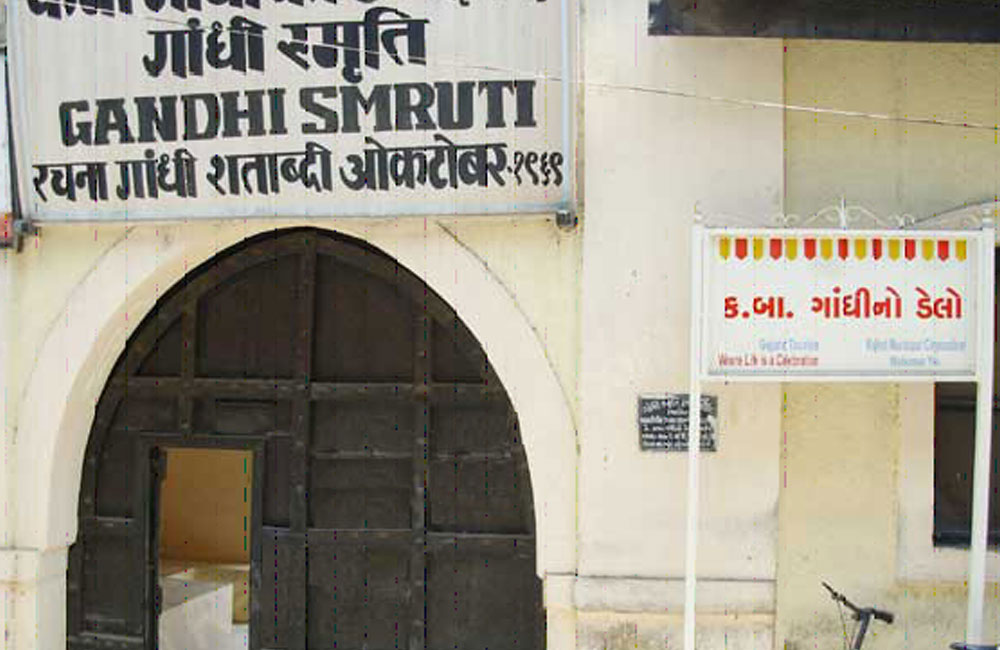
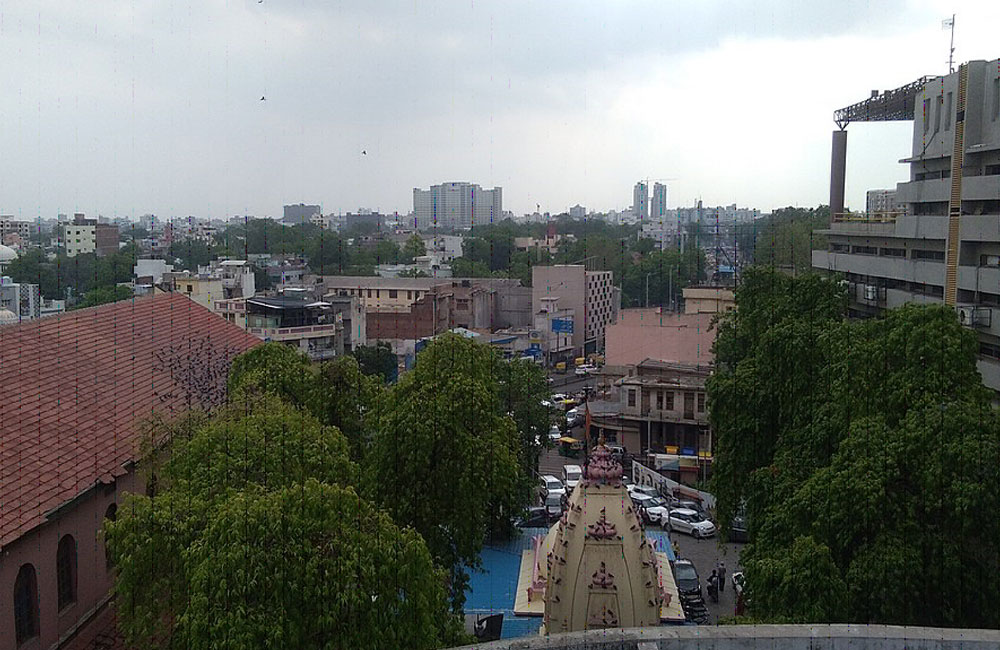
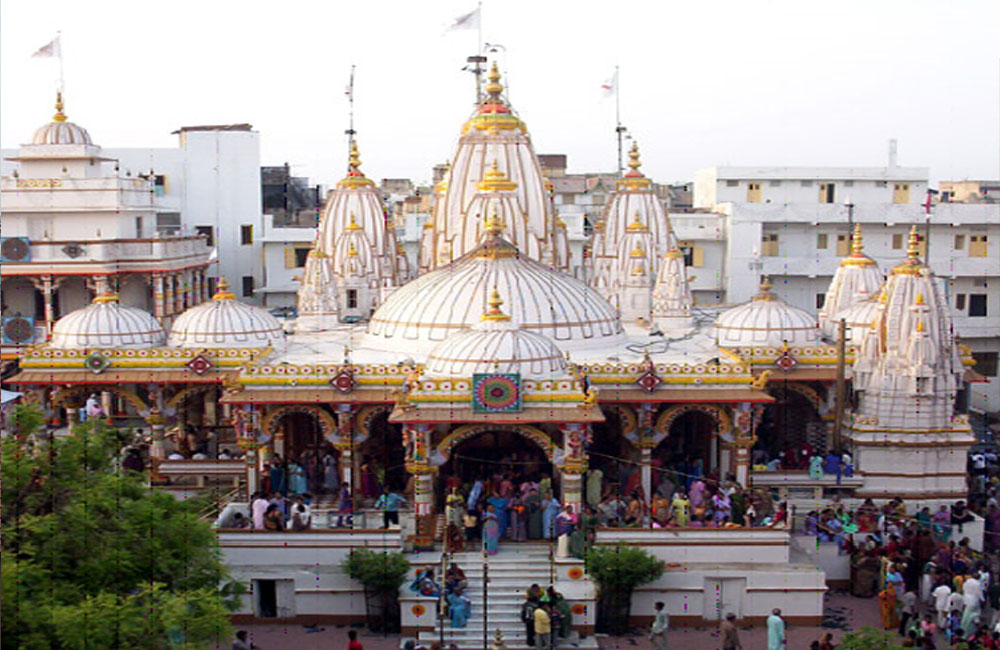
DAILY
FROM USD 1500 PP
8 Days / 7 Nights
Mahatma Gandhi
Upon arrival, you will be met and transferred to your hotel. (Check-in at 1200hrs) Upon arrival check in to your hotel / Home stay
Visit Kirti Mandir where Gandhi ji was born.
The historic city of Porbander, has creeks rich with flamingoes and other shore birds. The Daria Mahal Palace faxing the sea is a delightful work of architecture. The City’s greatest claim to fame is as a birthplace of Mahatma Gandhi, whose old residence, Kirti Mandir, is now a memorial museum that traces his life through a series of memorabilia and library.
Kirti Mandir is the memorial house kept in memory of Mohandas Karamchand Gandhi and Kasturba Gandhi located in city of Porbandar, Gujarat,Let us begin our journey where Gandhi began his. On October 2, 1869, Mohandas Karamchand Gandhi was born in a 3-storey blue haveli in the city of Porbandar, where his father, uncle and grandfather had all been prime ministers to the Jethwa Rajput rulers of the princely state.The site of Gandhi’s birth, now called Kirti Mandir, has been converted into a small museum about him, with an exhibit of old photographs, some of his very few possessions and a nice library of books either by him or relating to Gandhian philosophy and practice. (Visting Hours: 09:00 am to 12:00 pm, 03:00 pm to 06: 00 pm)
Overnight at hotel / Home Stay
Following breakfast drive to Rajkot Upon arrival check in to your hotel
Rajkot visit Mahatma Gandhi Museum located in the School where Gandhi ji Studied and visit Kaba Gandhi no Delo where Gandhi ji stayed.
Mahatma Gandhi Museum, Rajkot was previously known as Mohandas Gandhi Vidhyalaya, Alfred High School and Kathiawar High School established on 17th October 1853 with 36 students.Gandhiji completed his graduation from Alfred High School (Kathiawar High School) in the year 1887. Out of 38 students who had passed the high school entrance examination, Gandhiji was one of only two students in his year of matriculate.Mahatma Gandhi Museum is a grand tribute to 'Father of The Nation" Mohandas "Mahatma" Gandhi.Mahatma Gandhi Museum is operated by joint management of Rajkot Municipal Corporation (RMC) and Gujarat Tourism. As a part of the celebration of the 150th birth anniversary of Gandhiji, Mahatma Gandhi Museum, Rajkot inaugurated by Hon. Prime Minister of India Shree Narendra Modi along with Chief Minister of Gujarat Shree Vijay Rupani and Deputy Chief Minister Shree Nitin Patel on 30th September 2018.( its remain closed on Monday & Public holidays )
Kaba Gandhi No Delo (literally "Kaba Gandhi's house"), Rajkot was Indian leader Mahatma Gandhi's primary family home in India until 1915, including during those years when he stayed in London and in South Africa. Kaba Gandhi No Delo has now been converted into a museum called Gandhi Smriti.
Overnight at hotel / Home Stay
Following breakfast drive to Bhavnagar
Upon arrival check in to your hotel
Afternoon visit Gandhi Smriti (Bhavnagar).
The memorial built in remembrance to the Father of Nation commences varied activities. The ground floor housing the Barton museum is a repertoire of archeological remains from the surrounding regions. The Gandhi museum on the first floor takes one on a dramatic journey through the life of the Mahatma
Overnight at hotel / Home Stay
Following breakfast drive to Ahmedabad
Upon arrival check in to your hotel
Afternoon visit Gandhi Ashram, Kalam Kush paper making cottage industry which was vision of Gandhi ji to start Khadi & paper making ( Eco Friendly products.
Gandhi Ashram (Sabarmati Ashram ) Situated on peaceful stretch of the River sabarmati, gandhiji set up a simple retreat in 1918. Laying down the Objectives of the ashram, gandhiji wrote " to take training for the National service which is not contrary to universal well being and Constantly endeavouring for such national service, is the aim of this Ashram. " gandhiji first stayed in vanatshala a place where handlooms were Installed, but later on moved to ' hridaykunj ' the pulse of the ashram. This spartan accomdation was to witness gandhiji's evolution from mohandas To mahatma, who rose to be the ' father of nation ' . The first struggle That gandhiji spearheaded from sabarmati ashram was that of textile mill Workers. Soon after, there was a kheda satyagraha. Directed by his inner Voice bapu gave a call to break the salt law and embarked on a 385 km march With his 79 followers. On 12th march 1930 bapu commenced on this trail, setting the nation blaze with the spirit of defiance.
Kalam Kush This factory transforms scraps of waste cotton into paper, which was one of the cottage industries introduced by Gandhi. No chemicals are used in the process and it's interesting to watch how the paper is created. There's no official tour guide, but someone will likely show you around. You can purchase excellent paper products in the gift shop.
Overnight at hotel / Home Stay
Early morning Heritage walk of Old city of Ahmeadabad, later visit Kochrab Ashram , Gujarat Vidyapith
AHMEDABAD
Ahmadabad was founded by sultan ahmad shah in the year 1411 a.d with Blessings of his spiritual adviser sheikh ahmad AHMEDABAD khattu ganj baksha of Sarkhej at the site of an old town of ashawal and karnavati. Ahmedabad grew In wealth and splendour for a hundered years and became the centre of Skilled craftsmen and merchants. The ancient monuments in and around the City of ahmedabad may be broadly grouped under two main periods, the first That of ahmad shah - 1 datable to the first half of the 15th century a.d. , And the second , the period of mahmud begada, datable to the second half of 15th century a.d. Ahmedaba is the largest city and former capital of the Indian state of Gujarat. Ahmadabad is located on the banks of the Sabarmati River, 30 km (19 mi) from the state capital Gandhi nagar, which is its twin city. the Historic City of Ahmedabad or Old Ahmedabad, was declared as India's first UNESCO World Heritage City.
Morning Heritage walk at Ahmedabad: Morning visit Swami Narayan Temple: A religious cult followed by Swami-Narayan followers. It is one of the sects of Hinduism & the devotee's worship Lord Krishna by the name of Swami Narayan. This temple is built by Swami Narayani followers. It stands as a good example of exquisite wood carving.
Followed by a walk through Pols in old city (typical Gujarati adjoining houses colonies) : These small neighborhoods are both the backbone and heartbeat of the old city of Ahmedabad. In recent years, families have started moving out to live in more modern houses further from the city center, but many of them still feel a strong attachment to the close-knit communities of the pols that shaped their lives while growing up. Many of them have their own temple at the center of the neighborhood, one or more small shrines for whatever faiths are present. Many pols are part of a cottage industry, so you will find people sitting on the steps hand-sewing books or crimping silver chains together for traditional jewellery and various other crafts that allow people to add to their livelihood without leaving their homes, thus creating a vibrant community. There are bird feeders in each pol known as chabutro, tall poles that the people of Ahmedabad put up for birds to replace the trees cut down when they built the city, and crevices they built into the walls for birds to use as houses, showing a heartwarming concern for non-human life. The walled city was built before motor vehicles, meant for pedestrians and bicycles, so its small windy streets are best explored on foot.
The Kochrab Ashram was the first ashram in India organized by Mohandas Gandhi, the leader of the Indian independence movement, and was gifted to him by his friend Barrister Jivanlal Desai.Founded on 25 May 1915, Gandhi's Kochrab Ashram was located near the city of Ahmedabad in the state of Gujarat.This ashram was a major centre for students of Gandhian ideas to practise satyagraha, self-sufficiency, Swadeshi, work for the upliftment of the poor, women and untouchables, and to promote better public education and sanitation. The ashram was organised os n a basis of human equality, self-help and simplicity. However, as Kochrab became infested with plague after two years, Gandhi had to relocate his ashram, this time to the bank of the Sabarmati River. During his time at the Sabarmati Ashram Gandhi's reputation as the voice of the masses and as the leader of the nation would further increase.
Gujarat Vidyapith was founded by Mahatma Gandhi on 18th October, 1920. Gujarat Vidyapith is a deemed university since 1963. Gujarat Vidyapith is funded by the U. G. C. (University Grants Commission) for higher education programs. It was started as Rashtriya Vidyapith (National Institute of University Education) and was the wake of the Non-cooperative Movement. Mahatma Gandhi remained its life-long Kulpati (Chancellor). The Institute imparts higher education with an integrated system of education teaching from the Nursery to the Doctorate level. The main objective is to prepare workers of character, ability, culture and dedication for the conduct of movements connected with the regeneration of country in accordance with the ideals given by Mahatma Gandhi.
A separate huge section Gandhi Bhavan has literature by and on Gandhiji. Library has been acquiring literatures published on Mahatma Gandhi’s life and thought since its inception. This has now been developed in to an independent Gandhian books. The collection contains materials written by Gandhiji, books and journals on Gandhiji’s life, source materials on Gandhian thought, compiled works on Gandhian thought, translated literature and literature on Ghanaian constructive programmes. Another important feature of this hall is its photo exhibition.
Overnight at hotel / Home Stay
Following breakfast drive to Surat en-route visit Vadodara
En- route visit Vadodara city Vadodara formerly known as Baroda is the third-largest city in the Indian state of Gujarat, after Ahmedabad and Surat. It is known as a Sanskari Nagari (city) of India.
The city is known for the Lakshmi Vilas Palace, the residence of Baroda State's Maratha royal family, the Gaekwads, of the Gaekwad Dynasty. It is also the home of the Maharaja Sayajirao University of Baroda, the largest university in Gujarat. An important industrial, cultural and educational hub of western India, the city houses several institutions of national and regional importance while its major industries include petrochemicals, engineering, chemicals, pharmaceuticals, plastics, IT and foreign exchange services.
After visit continue drive to Surat
Upon arrival check in to your hotel
Overnight at hotel / Home Stay
Dandi is a prominent place in the history of the Independence Movement of India. The spark of Civil Disobedience Movement was kindled amongst the masses from this very place. As you might have read in your history books, the Salt Satyagraha which was a Non Violent Campaign that was started to fight against the stringent salt laws that were levied by the British Raj during the pre independence times started with the ‘Dandi March.’ The march started on March 12th in the year 1930 at the Sabarmati Ashram and continued till 6th April when Mahatama Gandhi along with his group of followers breached the Salt’s Law at Dandi. Dandi is also referred to as a major salt center of India.
Overnight at hotel / Home Stay
Morning, transfer to international airport for your flight back home.